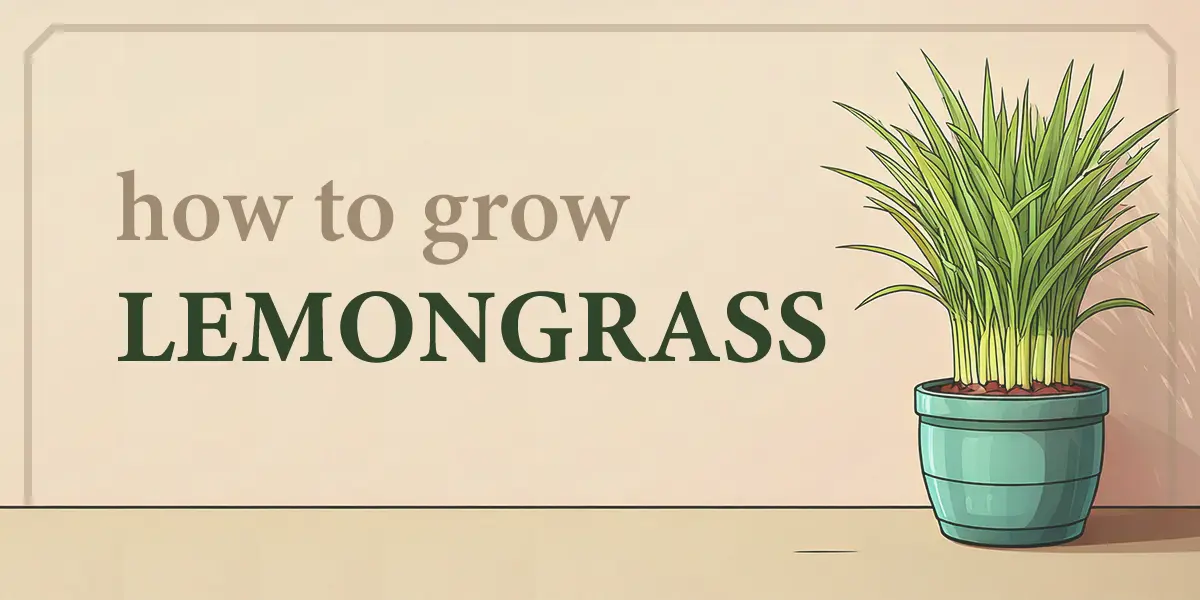Lemongrass (Cymbopogon citratus) is a fragrant perennial grass commonly used in Southeast Asian cuisines. The plant’s citrus-like scent and flavor add a distinct accent to soups, teas, and stir-fries.
Tall, graceful blades and clustered growth make it a striking landscape feature, and its citrusy aroma is a natural insect repellent.
Lemongrass thrives in warm climates and requires minimal care. It’s a practical, low-maintenance, and aesthetically pleasing choice for Southern California gardens.

Lemongrass is a common ingredient in Thai and other Asian cuisines.
Lemongrass Benefits
Why plant lemongrass? Here are just a few reasons:
- It’s a staple in Thai, Vietnamese, and Indian dishes like tom yum soup and curries.
- Lemongrass oils have anti-inflammatory and antibacterial properties.
- It can repel mosquitos and other insects.
- It adds a clean, refreshing flavor to teas and other beverages.
- Tall, feathery foliage makes it a desirable landscape plant.
Optimal Growing Conditions
Light
- Lemongrass loves solar radiation! Give it at least 6–8 hours of direct sunlight daily.
- Place pots on a sunny balcony or position them in the brightest spot in your garden.
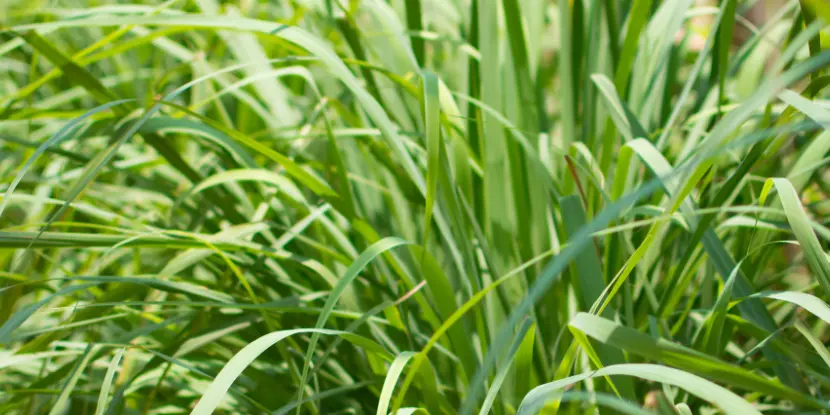
A closeup of lemongrass foliage.
Temperature
- Lemongrass prefers warm temperatures ranging from 70°F to 95°F.
- It’s a tropical plant, so avoid frost or cold weather exposure.
- If you live in a cooler region, consider growing it in pots and bringing it indoors during winter.
Soil
- Choose well-draining soil rich in organic matter. A mix of sandy or loamy soil works best.
- Soil should have a pH level of 5.0 to 8.0.
- Amend the soil with compost or aged manure before planting.
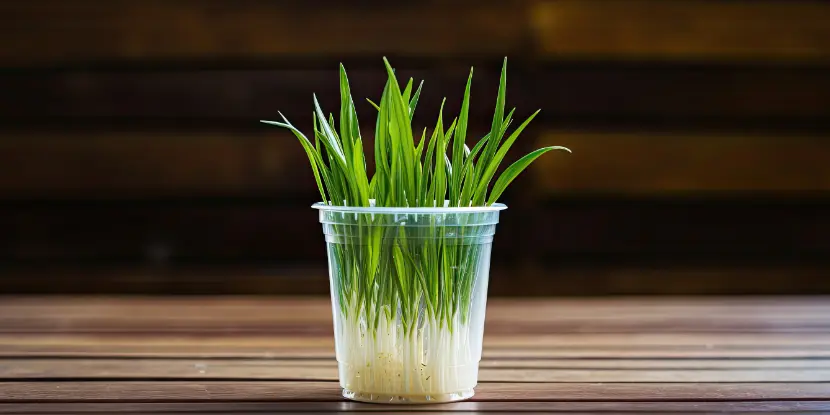
Lemongrass stalks can be sprouted in a cup of water.
Propagating Lemongrass
You can grow lemongrass from stalks, seeds, or seedlings.
From Stalks
- Purchase fresh lemongrass stalks from your local market.
- Trim the top green portions and place the stalks in a glass of water with the bulb end submerged.
- After a week or two, roots should appear.
- Once roots are about 1 inch long, they’re ready for planting.
From Seeds
- While less common, lemongrass seeds can be planted directly in pots or seed trays.
- This process requires patience, as germination can take several weeks.
Mature Plants
- Divide mature plants into smaller clumps with roots attached.
- Dig up the plant and gently separate it into smaller sections, ensuring each has a few roots attached.
- Replant the divided sections in pots or your garden, and water well.
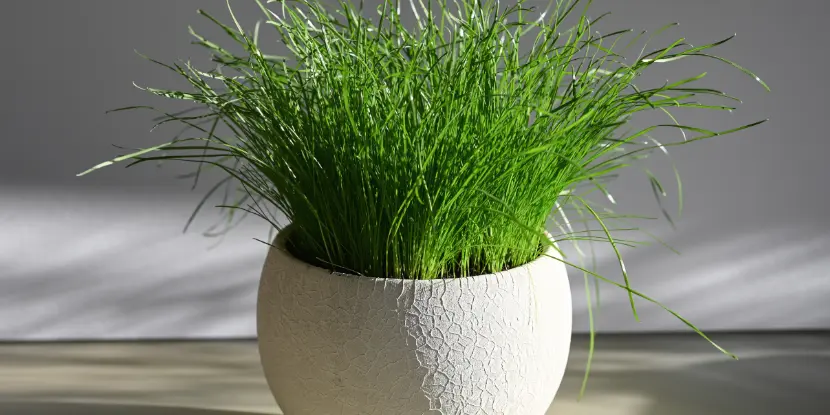
Lemongrass be grown in containers indoors or outdoors.
Planting Lemongrass
Planting in a Pot
Growing lemongrass in a container is an excellent choice if space is limited.
- Use a pot at least 12–16 inches wide and deep to give your plant room to grow.
- Fill your pot with well-draining, nutrient-rich soil.
- Plant the stalks or seedlings. Cover roots and place the base of the stalk just above the soil surface.
- Place the pot where it will receive plenty of sunlight.
Planting in the Yard
Planting lemongrass directly in your garden allows it to grow more robustly.
- Select a spot with full sunlight and proper drainage.
- Place each stalk or seedling about 24 inches apart to prevent overcrowding.
- Dig a small hole, plant your rooted stalk or seedling, and gently press the surrounding soil to secure it.
Lemongrass Care
Water
- Keep the soil consistently moist, but avoid waterlogging.
- Water your plants 2–3 times a week or more frequently in hot weather.
- Pots may require more regular watering, as container soil dries out faster.
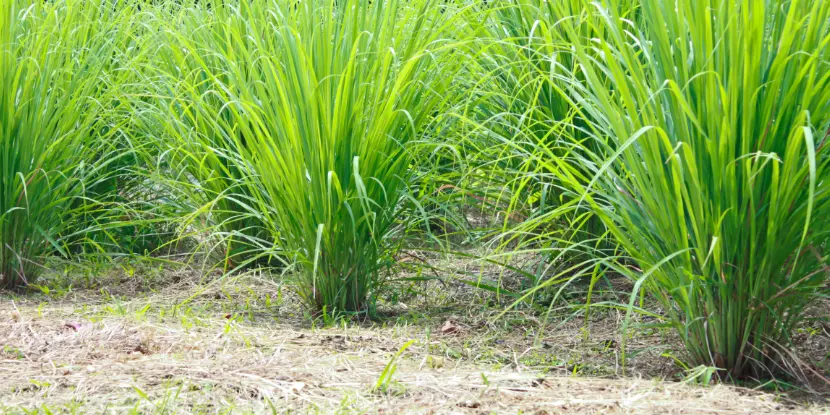
Lemongrass clusters in a garden.
Fertilizer
- Feed your lemongrass with a balanced, all-purpose fertilizer once a month during the growing season (early spring to late fall in Southern California).
- Add compost or organic matter to enrich the soil.
Pruning & Cutting
- Trim any yellow or dry leaves to promote new growth.
- Gather the stalks and cut them to the desired length using clean, sharp pruning shears.
- Harvest fully matured stalks by cutting them close to the base.
Pests & Diseases
- Lemongrass is relatively pest-resistant, but watch for aphids or spider mites.
- If an infestation occurs, spray down the plant with a mild soap and water solution.
- Companion planting with herbs like basil, mint or rosemary helps to keep pests at bay.
- Avoid overwatering. Damp conditions can lead to fungal diseases like root rot.
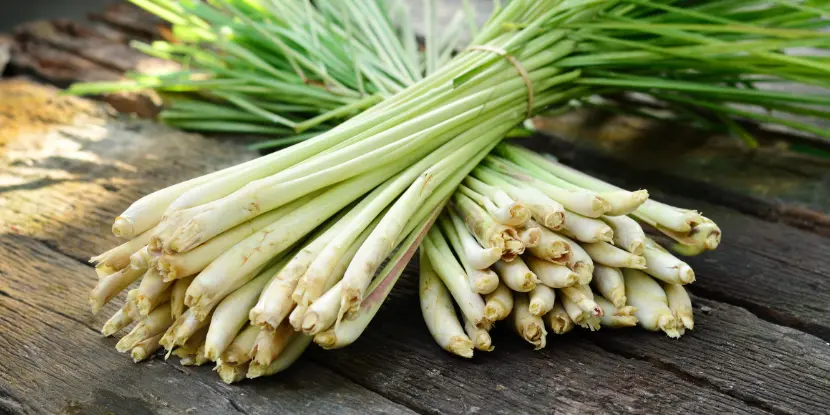
These lemongrass stalks look almost like green onions (but taste like citrus!).
Harvest & Storage
You can start harvesting lemongrass within 4–6 months of planting.
- Harvest lemongrass by cutting the stalks close to the base when fully matured.
- Store in a cool, dry place for 2–3 weeks, or freeze for more extended storage.
- To freeze, chop the stalks into small pieces and store them in an airtight container or bag in the freezer.
- Lemongrass can also be dried by hanging the stalks upside down in a well-ventilated area. Once dried, store in an airtight container.
5 Lemongrass Culinary Uses
Freshly harvested lemongrass deserves a place in your kitchen! Here are five ideas to get you started:
- Lemongrass Tea – Steep lemongrass stalks in hot water for a refreshing tea.
- Tom Yum Soup – Add a fragrant kick to this classic Thai dish.
- Lemongrass Chicken – A zesty lemongrass, garlic, and lime marinade makes your chicken irresistible, unlike Debra Barone’s bland lemon chicken in Everybody Loves Raymond.
- Lemongrass Curry – Blend it into curries for an authentic flavor profile.
- Lemongrass Iced Mocktail – Mix lemongrass infusion with lime juice and mint for an irresistible summer drink.
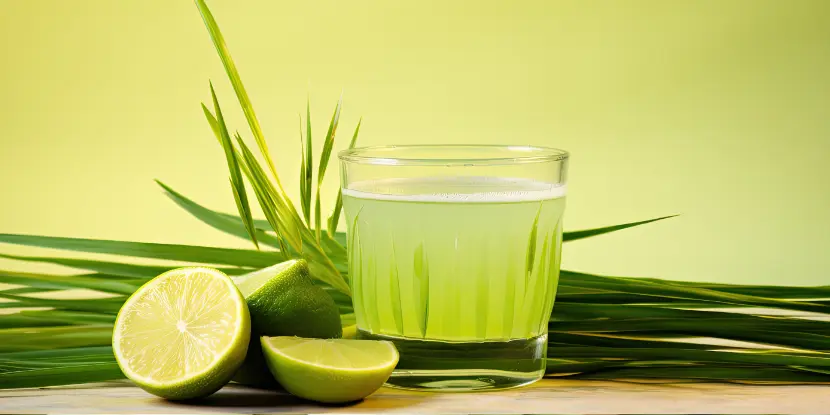
Anyone for a refreshing mocktail with lime and lemongrass?
FAQs: Growing Lemongrass
Q: Can lemongrass grow indoors?
Yes, but it needs a sunny windowsill or grow lights to thrive.
Q: How often should I water lemongrass?
Water 2–3 times weekly or as needed to keep the soil moist.
Q: Can lemongrass survive winter?
It can survive indoors, but outdoor plants may need protection in colder climates.
Q: What pests affect lemongrass?
Lemongrass is naturally pest-resistant, but aphids or spider mites may appear.
Q: How tall can lemongrass grow?
Lemongrass can reach 4–6 feet tall under the right conditions.
Q: Can I grow lemongrass from grocery store stalks?
Yes! Fresh stalks with intact bulbs work best.
Q: Does lemongrass need fertilizer?
Yes, monthly fertilizer boosts growth and health.
Q: Can I propagate lemongrass in water?
Yes, it’s the easiest method!

